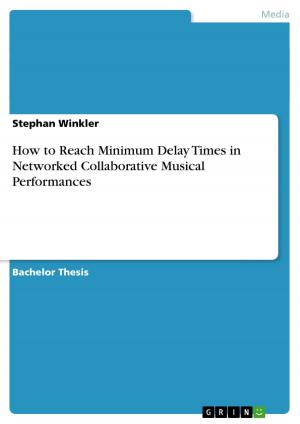Global Transcriptional Responses of Fission Yeast to Glucose Starvation Stress
Nonfiction, Science & Nature, Science, Biological Sciences, Genetics| Author: | Michael Sassen | ISBN: | 9783638400572 |
| Publisher: | GRIN Publishing | Publication: | July 20, 2005 |
| Imprint: | GRIN Publishing | Language: | English |
| Author: | Michael Sassen |
| ISBN: | 9783638400572 |
| Publisher: | GRIN Publishing |
| Publication: | July 20, 2005 |
| Imprint: | GRIN Publishing |
| Language: | English |
Diploma Thesis from the year 2005 in the subject Biology - Genetics / Gene Technology, grade: 1,1, TU Bergakademie Freiberg, 116 entries in the bibliography, language: English, abstract: 1. Introduction 1.1 Schizosaccharomyces pombe as a Model System S. pombe functions as a suitable model system since it is easy and inexpensive to rear, has a convenient size, a short life cycle, and is genetically manipulable. As a unicellular eukaryote, the fission yeast S. pombe can exist either in a haploid or diploid state and possesses two different mating types (h+ and h-). The wild type, however, is h90, which means it can switch mating type. Figure 1.01: Left, picture of S. pombe cells At top are two dividing cells in late mitotic phase, showing the fission yeast typical septum at the point of cytoplasmic division. The lower cell is in early M phase, having its chromosomes already segregated. Figure 1.02: Right, fission yeast cell cycle Diagrammatic representation of the S. pombe cell cycles with the interchange between the two occurring in G1 phase (Figure obtained and used with permission from Trevor Pemberton, University of Sussex). [...] S. pombe can undergo two different life cycles, either the vegetative (mitotic) cycle or the sporulation (meiotic) cycle, depending on the environment it is living in. These two cycles are shown in figure 2 with the change between the two occurring in cells at the G1 stage of the mitotic cycle. Under laboratory conditions, given all nutrients required, S. pombe prefers the haploid state. This makes it a favorable organism for genetic research since it ensures that introduced mutations are not masked by another wild type allele. [...]
Diploma Thesis from the year 2005 in the subject Biology - Genetics / Gene Technology, grade: 1,1, TU Bergakademie Freiberg, 116 entries in the bibliography, language: English, abstract: 1. Introduction 1.1 Schizosaccharomyces pombe as a Model System S. pombe functions as a suitable model system since it is easy and inexpensive to rear, has a convenient size, a short life cycle, and is genetically manipulable. As a unicellular eukaryote, the fission yeast S. pombe can exist either in a haploid or diploid state and possesses two different mating types (h+ and h-). The wild type, however, is h90, which means it can switch mating type. Figure 1.01: Left, picture of S. pombe cells At top are two dividing cells in late mitotic phase, showing the fission yeast typical septum at the point of cytoplasmic division. The lower cell is in early M phase, having its chromosomes already segregated. Figure 1.02: Right, fission yeast cell cycle Diagrammatic representation of the S. pombe cell cycles with the interchange between the two occurring in G1 phase (Figure obtained and used with permission from Trevor Pemberton, University of Sussex). [...] S. pombe can undergo two different life cycles, either the vegetative (mitotic) cycle or the sporulation (meiotic) cycle, depending on the environment it is living in. These two cycles are shown in figure 2 with the change between the two occurring in cells at the G1 stage of the mitotic cycle. Under laboratory conditions, given all nutrients required, S. pombe prefers the haploid state. This makes it a favorable organism for genetic research since it ensures that introduced mutations are not masked by another wild type allele. [...]















